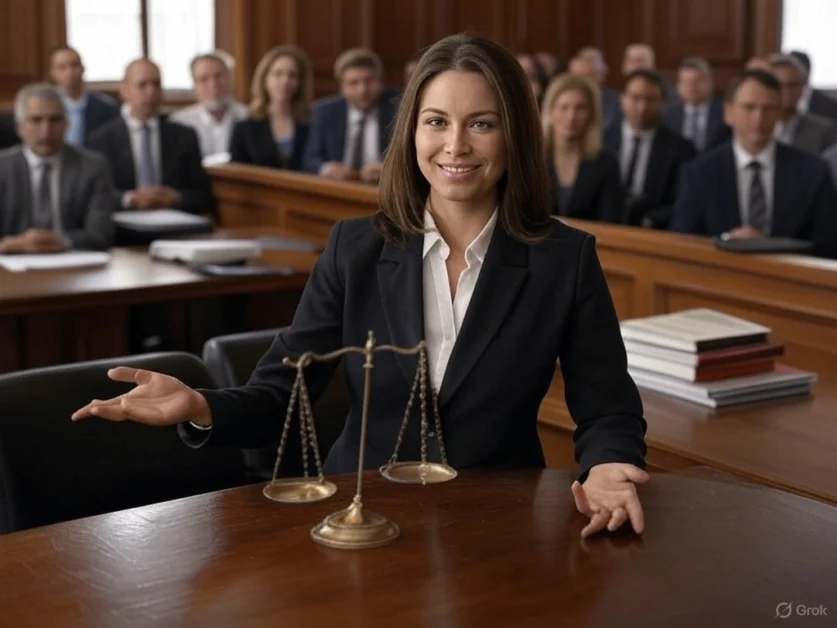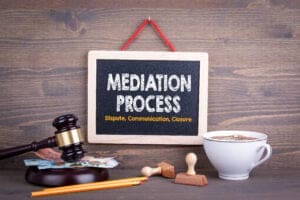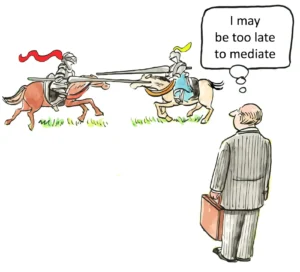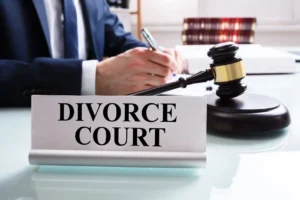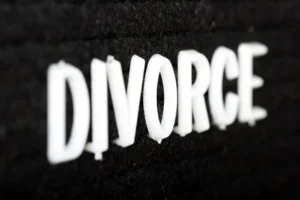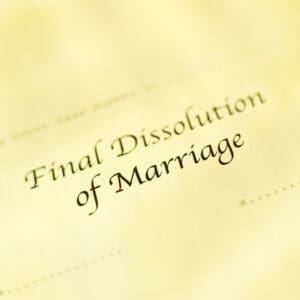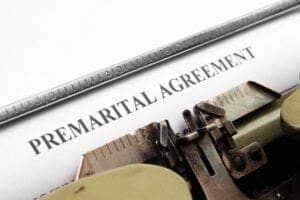Presidential Authority vs. Judicial Review: The Battle Over Executive Orders
The ongoing tension between presidential authority and judicial review has reached unprecedented levels in recent months, as courts across the nation evaluate the constitutionality of executive orders targeting law firms and other entities. President Trump’s March 2025 executive actions against prominent law firms including Perkins Coie, Covington & Burling, and Paul Weiss have sparked intense legal battles that highlight fundamental questions about the scope of executive power and the judiciary’s role in checking that power. These cases illustrate the complex constitutional balance between a president’s authority to manage the executive branch and the courts’ responsibility to ensure that such actions remain within constitutional boundaries.
The recent executive orders represent a significant test case for judicial review of presidential actions, with federal judges already issuing temporary restraining orders blocking key provisions of these directives. U.S. District Judge Beryl Howell’s ruling that the “retaliatory animus” of Trump’s order against Perkins Coie was “clear on its face” and likely violated constitutional protections against viewpoint discrimination demonstrates how courts apply constitutional principles to evaluate executive actions. As these cases proceed through the federal court system, they will establish important precedents regarding the limits of presidential authority and the scope of judicial review over executive orders.
Historical Development of Executive Order Authority
The power to issue executive orders derives from Article II of the Constitution, which grants the president broad authority to manage the operations of the federal government. While the Constitution does not explicitly mention executive orders, presidents since George Washington have used this tool to direct executive branch activities, implement congressional legislation, and address national emergencies. Over time, the scope and impact of executive orders have expanded significantly, raising important questions about their proper constitutional limits.
The Supreme Court has historically recognized substantial presidential discretion in issuing executive orders, particularly in areas related to foreign affairs, national security, and internal management of the executive branch. In cases like United States v. Curtiss-Wright Export Corp., the Court acknowledged the president’s position as the “sole organ” of the nation in foreign relations, granting significant deference to executive actions in this domain. Similarly, the Court has recognized broad presidential authority to manage federal employees, control access to classified information, and direct the operations of executive agencies.
However, this authority has never been unlimited. The Court has consistently held that executive orders must be grounded in either constitutional or statutory authority. In Youngstown Sheet & Tube Co. v. Sawyer, Justice Robert Jackson’s concurring opinion established the influential three-tier framework for analyzing presidential power that continues to guide judicial review today. Under this framework, presidential authority is strongest when acting with congressional authorization, more questionable when Congress has been silent, and at its “lowest ebb” when acting contrary to congressional will. This framework provides an essential analytical tool for courts evaluating the constitutionality of executive orders like those currently under judicial scrutiny.
Constitutional Limitations on Executive Authority
Despite the broad discretion afforded to presidents, constitutional limitations on executive authority remain fundamental to our system of separated powers. The First Amendment’s protections for free speech and association create significant constraints on presidential actions that target individuals or organizations based on their viewpoints or associations. When executive orders appear motivated by retaliatory animus against political opponents or their legal representatives, they trigger heightened judicial scrutiny under First Amendment principles.
The Fifth Amendment’s due process requirements impose additional constraints on executive actions that deprive individuals or organizations of liberty or property interests without adequate procedural protections. Executive orders that impose significant penalties or restrictions without notice or opportunity to be heard raise serious due process concerns. As Judge Howell noted in her ruling on the Perkins Coie order, this approach may work in “Alice in Wonderland where the Queen of Hearts yells, ‘Off with their heads!’ at annoying subjects… and announces a sentence before a verdict,” but it cannot be the reality in a constitutional democracy governed by the rule of law.
Separation of powers principles further limit presidential authority by preventing the executive from usurping legislative or judicial functions. Executive orders that effectively create new law rather than implementing existing statutes, or that attempt to dictate judicial outcomes, exceed constitutional boundaries. The Supreme Court has repeatedly invalidated executive actions that transgress these separation of powers limitations, emphasizing that even well-intentioned presidential initiatives must respect the Constitution’s structural safeguards against concentrated power.
Judicial Review of Executive Orders
The doctrine of judicial review established in Marbury v. Madison empowers federal courts to evaluate the constitutionality of executive actions, including executive orders. This power serves as a crucial check on potential executive overreach, ensuring that presidential directives remain within constitutional boundaries. Courts applying judicial review to executive orders typically examine whether the president had legal authority to issue the order, whether the order conflicts with constitutional rights or principles, and whether proper procedures were followed in its implementation.
The standard of review applied to executive orders varies depending on the nature of the order and the rights at stake. Orders that implicate fundamental constitutional rights, such as freedom of speech or due process, receive more rigorous scrutiny than those addressing routine administrative matters. Similarly, orders that appear motivated by improper purposes, such as retaliation against political opponents, face heightened judicial skepticism. This variable approach allows courts to respect legitimate executive discretion while providing meaningful protection against constitutional violations.
Recent cases challenging executive orders have highlighted the importance of factual context in judicial review. Courts increasingly look beyond the face of the orders to examine statements by the president and administration officials that might reveal improper motives or purposes. In the Perkins Coie case, Judge Howell pointed to the explicit references to the firm’s representation of Hillary Clinton and other political opponents as evidence of retaliatory intent. This willingness to consider context reflects the judiciary’s commitment to meaningful review rather than mere deference to executive assertions.
First Amendment Implications of Targeting Law Firms
The executive orders targeting law firms raise profound First Amendment concerns by potentially punishing protected legal advocacy. The Supreme Court has long recognized that legal representation constitutes a form of protected expression and association under the First Amendment. When the government penalizes attorneys or law firms for representing particular clients or advocating certain positions, it engages in a form of viewpoint discrimination that strikes at the heart of First Amendment values.
The orders’ explicit references to the firms’ representation of political opponents like Hillary Clinton and Jack Smith suggest that the government is indeed targeting the firms based on their client choices rather than any legitimate regulatory purpose. This apparent viewpoint discrimination triggers strict scrutiny under established First Amendment doctrine, requiring the government to demonstrate that its actions serve a compelling interest and are narrowly tailored to achieve that interest. Courts have historically viewed with extreme skepticism government actions that appear designed to punish or chill protected advocacy.
Beyond the immediate impact on the targeted firms, these executive orders create broader First Amendment concerns by potentially deterring other attorneys from representing controversial clients or taking positions adverse to the administration. This chilling effect threatens the robust marketplace of ideas that the First Amendment was designed to protect. As Judge Howell noted, the orders cast a “chilling harm of blizzard proportion across the entire legal profession” by signaling that attorneys who represent disfavored clients may face severe governmental retaliation.
Due Process Challenges to Executive Actions
Significant due process concerns arise from the executive orders’ imposition of severe penalties without any pre-deprivation notice or opportunity to be heard. The Fifth Amendment’s Due Process Clause requires that before the government deprives individuals of life, liberty, or property, it must provide adequate procedural protections. These typically include notice of the proposed action, an opportunity to present evidence and arguments before an impartial decision-maker, and a decision based on the evidence presented.
The executive orders against the law firms provided none of these protections. They were issued unilaterally, without any prior notice to the affected firms or opportunity for them to respond to the allegations. This procedural deficiency is particularly troubling given the severity of the consequences – restrictions that threaten the firms’ very existence and the livelihoods of thousands of employees. The lack of procedural safeguards undermines the factual basis for the orders, as there was no adversarial process where evidence could be tested and challenged.
Courts have consistently emphasized the importance of procedural fairness when the government takes actions with significant adverse consequences for private parties. In cases like Mathews v. Eldridge, the Supreme Court established a balancing test for determining what process is due, considering the private interest affected, the risk of erroneous deprivation, and the government’s interest in efficient procedures. Under this framework, the executive orders’ complete absence of pre-deprivation process raises serious constitutional questions, particularly given the substantial private interests at stake and the high risk of error in unilateral decision-making.
Separation of Powers Concerns
The executive orders raise fundamental questions about separation of powers and the limits of presidential authority. While the president has significant discretion in many areas, this authority is not unlimited and remains subject to constitutional constraints. The orders appear to assert a broad power to regulate private entities and impose penalties based solely on executive determination, without any clear statutory authorization from Congress.
This assertion of authority potentially encroaches on Congress’s legislative power to establish rules governing private conduct. Under our constitutional system, the power to regulate private entities and impose penalties generally requires legislative authorization, judicial process, or both. When the president acts without clear statutory authority to impose significant restrictions on private organizations, separation of powers concerns arise about whether the executive is assuming powers properly belonging to the legislative branch.
The orders also raise concerns about interference with the judicial function. By targeting law firms representing parties in litigation against the administration, the orders potentially undermine the integrity of the judicial process and the adversarial system. The independence of the legal profession serves as an important safeguard for the rule of law, allowing attorneys to zealously represent their clients without fear of governmental retaliation. Executive actions that threaten this independence risk undermining the judiciary’s ability to function as an independent check on executive power.
National Security and Presidential Discretion
The administration has defended aspects of the executive orders, particularly the security clearance revocation provisions, by invoking the president’s broad authority over national security matters. During court proceedings, Department of Justice officials argued that the president’s determination regarding who can be trusted with national security secrets is “not reviewable” by courts. This position builds on Supreme Court precedent that has traditionally afforded the executive branch significant deference in national security matters.
In Department of the Navy v. Egan, the Supreme Court recognized the president’s constitutional authority over classified information, stating that “the authority to protect such information falls on the President as head of the Executive Branch and as Commander in Chief.” This decision has been interpreted as granting the president substantial discretion in security clearance determinations, with limited judicial review. The administration relies on this precedent to argue that courts should not second-guess the president’s judgment about which individuals or organizations pose security risks.
However, this authority is not unlimited, particularly when security clearance decisions appear motivated by political retaliation rather than genuine security concerns. While courts have been reluctant to review the merits of security clearance determinations, they may be more willing to intervene when clearances are revoked as punishment for constitutionally protected activities. The blanket nature of the revocations – affecting all attorneys at the firms regardless of their connection to the supposedly problematic representations – further suggests that genuine security concerns are not driving these decisions.
Impact on the Legal Profession and Rule of Law
The executive orders against law firms threaten to fundamentally alter the relationship between the legal profession and the government in ways that undermine the rule of law. By targeting firms for their client choices, these actions create a chilling effect that may discourage attorneys from representing unpopular clients or taking positions adverse to the administration. This directly contradicts the legal profession’s ethical obligation to ensure that all parties have access to representation, regardless of how controversial or politically charged their cases may be.
The American College of Trial Lawyers expressed this concern forcefully, stating that “the White House’s retaliating against a law firm merely because it represented a client against whom the Executive Branch has a grievance, threatens the bedrock principles of our system of justice.” This sentiment has been echoed by numerous legal organizations, including the American Bar Association, which emphasized that “clients have the right to access legal representation without government interference.” When lawyers fear government retaliation for representing certain clients, the adversarial system that forms the backbone of American justice is compromised.
The practical consequences of these orders extend far beyond the targeted firms themselves. As Perkins Coie argued in court filings, the executive order “presents a clear and present danger to the administration of justice in the United States” by signaling to all law firms that representing clients disfavored by the administration could result in devastating consequences. This creates a system where legal representation may become increasingly determined by political considerations rather than professional judgment and ethical obligations.
Judicial Responses to Recent Executive Orders
Federal courts have largely blocked implementation of executive actions targeting law firms, finding significant constitutional deficiencies in these initiatives. Judge Howell’s temporary restraining order against the Perkins Coie executive order represents an important first step in the legal challenge, though her order did not block the security clearance review provisions, reflecting the traditionally strong deference courts give to executive authority in that specific area.
During the emergency hearing, Judge Howell expressed “grave concern” that Trump’s order would intimidate other law firms, discouraging them from taking on causes or people at odds with the administration. This concern about the broader chilling effect of the orders appears to have factored significantly into her decision to issue the temporary restraining order. She also noted that the order would harm not only the firm’s 1,200 lawyers but also its 2,500 non-lawyer employees, from IT staff to secretaries, most of whom had nothing to do with the politically controversial matters cited in the order.
The judge’s questioning during the hearing revealed particular concern about the government’s position on the limits of presidential authority. When Department of Justice officials argued that the president’s determination regarding security clearances is unreviewable, Judge Howell asked whether the president could issue a similar executive order against Williams & Connolly in retaliation for representing Perkins Coie in this very case. The government’s affirmative response reportedly sent “chills” down the judge’s spine, highlighting the potentially unlimited scope of the power the administration was claiming.
Historical Precedents for Executive-Judicial Conflicts
The current tension between presidential authority and judicial review has historical parallels, though the specific targeting of law firms represents a novel development. Previous administrations have tested the boundaries of executive power through controversial executive orders, often leading to significant judicial pushback. These historical episodes provide important context for understanding the current constitutional conflict.
During the Korean War, President Harry Truman issued an executive order seizing steel mills to prevent a strike that he believed would threaten national security. In Youngstown Sheet & Tube Co. v. Sawyer, the Supreme Court invalidated this order, finding that it exceeded presidential authority by effectively making law rather than executing it. Justice Jackson’s concurring opinion in that case established the influential framework for analyzing presidential power that continues to guide judicial review today. This precedent demonstrates the judiciary’s willingness to check executive actions that exceed constitutional boundaries, even in matters touching on national security.
More recently, courts have reviewed executive orders related to immigration, environmental regulation, and other controversial policy areas. These cases have further refined the principles governing judicial review of executive actions, establishing that courts will scrutinize both the legal authority for such actions and their compliance with constitutional rights and principles. While courts typically afford the president substantial deference in matters of executive branch management, they have consistently rejected claims of unreviewable presidential authority that would place executive actions beyond judicial scrutiny.
The Ultra Vires Doctrine in Executive Order Challenges
The legal doctrine of ultra vires provides an important framework for challenging executive orders that exceed presidential authority. This doctrine, which literally means “beyond the powers,” allows courts to invalidate government actions that lack proper legal authorization. When the president issues an executive order without constitutional or statutory authority, or in a manner that conflicts with existing law, courts may find the order ultra vires and therefore unenforceable.
In the context of the law firm executive orders, ultra vires arguments focus on whether the president has legal authority to impose the specific restrictions contained in these orders. While presidents have broad discretion to manage the executive branch, this authority does not extend to regulating private entities or imposing penalties without statutory authorization. The absence of clear congressional legislation authorizing these actions strengthens ultra vires challenges, as the president’s power is at its “lowest ebb” when acting contrary to congressional will or in areas where Congress has not delegated authority.
Courts applying the ultra vires doctrine typically begin by identifying the specific source of authority the president claims for the executive order, then evaluating whether that source actually authorizes the particular action taken. This analysis requires careful examination of constitutional provisions, federal statutes, and prior judicial interpretations. When courts find that an executive order exceeds the president’s lawful authority, they may invalidate the order in whole or in part, providing an important check on executive overreach without necessarily reaching broader constitutional questions.
Implications for Future Executive-Judicial Relations
The current legal battles over executive orders targeting law firms will likely have significant implications for future relations between the executive and judicial branches. If courts ultimately invalidate these orders on constitutional grounds, they will establish important precedents limiting presidential authority to target private entities based on political considerations. These precedents would strengthen judicial review as a check on executive power, potentially constraining similar actions by future administrations.
Conversely, if courts uphold these executive orders or significant portions of them, they would effectively expand presidential discretion to use executive authority against perceived political opponents. Such an outcome could shift the balance of power between the branches, granting presidents greater latitude to use executive orders for politically motivated actions with limited judicial oversight. This potential expansion of presidential authority raises concerns about the long-term health of constitutional checks and balances.
The specific legal reasoning courts employ in these cases will be as important as the ultimate outcomes. Judicial opinions that clearly articulate the constitutional principles limiting executive authority, even if they uphold particular aspects of the challenged orders, can provide valuable guidance for future executive-judicial interactions. Similarly, opinions that distinguish between legitimate exercises of presidential discretion and unconstitutional overreach can help maintain appropriate separation of powers while respecting the president’s proper constitutional role.
The Role of Congressional Oversight
While judicial review provides an important check on executive orders, congressional oversight represents another essential mechanism for ensuring that presidential actions remain within constitutional boundaries. Congress possesses various tools to influence and constrain executive orders, including legislation that clarifies or limits presidential authority, appropriations restrictions that prevent implementation of certain directives, and oversight hearings that scrutinize executive branch actions.
In the current context, Congress could potentially enact legislation specifically addressing executive orders targeting law firms or other private entities. Such legislation might establish procedural requirements for certain types of executive actions, prohibit retaliation based on client representation, or clarify the limits of presidential authority in specific domains. By exercising its legislative power, Congress can provide clearer boundaries for executive action and reduce the need for judicial intervention.
Congressional oversight hearings also serve an important function by bringing public attention to controversial executive actions and creating a record of their impacts and justifications. These hearings can influence public opinion, shape judicial understanding of the issues at stake, and potentially lead to legislative responses. The effectiveness of congressional oversight depends significantly on political dynamics, however, with divided government typically producing more robust oversight than unified party control of both branches.
Practical Impacts on Targeted Organizations
The executive orders have created potentially existential threats to the targeted law firms by severely restricting their ability to conduct business. Perkins Coie, for example, has over 1,200 lawyers and 2,500 non-lawyer employees across multiple offices, the vast majority of whom had nothing to do with the politically sensitive matters cited in the executive order. Yet all of these individuals face professional harm from the restrictions imposed by the order.
In court proceedings, Perkins Coie’s attorney described the executive order as “like a tsunami waiting to hit the firm” that “truly is life-threatening” and “will spell the end of the law firm.” This is not hyperbole – the firm has already reported that government representatives have denied meetings with its attorneys even on matters unrelated to presidential politics, agencies have requested that clients disclose their affiliations with the firm, and numerous clients have already taken their business elsewhere. Without judicial intervention, the firm warned it risked losing significant client relationships within days, threatening its continued viability.
The economic damage extends beyond the firms themselves to their clients, who face disruption to ongoing legal matters and may be forced to find new counsel unfamiliar with their cases. This creates inefficiencies and additional costs for these clients, many of whom have long-standing relationships with the targeted firms and chose them for their specific expertise rather than any political considerations. The executive orders effectively punish these innocent third parties for their attorneys’ past representation of politically disfavored clients.
Broader Pattern of Executive Actions
The executive orders against specific law firms appear to be part of a broader pattern of targeting legal professionals perceived as political opponents. Beyond the firms already subject to executive orders, the administration has indicated that it is investigating additional law firms for possible retaliation, creating uncertainty throughout the legal community about who might be targeted next.
This pattern extends beyond law firms to include scrutiny of law schools and other legal institutions. The administration has criticized law schools for their diversity, equity, and inclusion initiatives, suggesting that these programs may violate presidential directives. This broader campaign against various legal institutions suggests a systematic effort to reshape the legal profession’s relationship with the executive branch, creating new forms of leverage and control over traditionally independent legal actors.
The expanding scope of these actions has created what one legal consultant described as a “chilling” effect throughout the legal industry, with firms becoming increasingly cautious about their actions and even reconsidering the content of their websites to avoid becoming targets. This widespread apprehension reflects recognition that the current targeting of specific firms may be just the beginning of a more comprehensive effort to influence the legal profession through the threat of executive retaliation.
Conclusion: Constitutional Principles at Stake
The legal challenges to executive orders targeting law firms ultimately concern fundamental constitutional principles that transcend the specific organizations involved or the particular political context. At stake is the basic proposition that in a constitutional democracy, the government cannot punish lawyers for representing clients it dislikes or advocating positions it opposes. This principle protects not just the legal profession but the rights of all Americans to access legal representation without fear of government interference.
The outcome of these legal challenges will significantly impact the future relationship between the executive branch and the legal profession. If the courts ultimately reject these executive orders as unconstitutional overreach, they will reaffirm the independence of the legal profession and its crucial role in our system of checks and balances. If, however, these orders are allowed to stand in whole or in part, they could fundamentally alter this relationship, creating new forms of executive leverage over legal advocacy that would undermine the profession’s ability to serve as an independent check on government power.
As these cases proceed through the courts, they serve as a powerful reminder of why the independence of the legal profession matters. When lawyers can be targeted for representing unpopular clients or advocating controversial positions, everyone’s rights become more vulnerable. The legal challenges to these executive orders thus represent not just a defense of specific law firms but a defense of core constitutional principles that protect all Americans’ access to justice and the rule of law itself.
Judge Howell’s observation that the executive order “casts a chilling harm of blizzard proportion across the entire legal profession” highlights the broader implications beyond the immediate parties. This chilling effect threatens to discourage attorneys from representing clients who may be politically disfavored, undermining the fundamental principle that everyone deserves legal representation regardless of their political affiliations or the popularity of their causes.
The outcome of these constitutional challenges will ultimately determine whether executive authority can be wielded as a weapon against legal advocates or whether the courts will reaffirm the essential independence of the legal profession in our constitutional system.
Citations:
- https://www.politico.com/news/2025/03/12/perkins-coie-trump-executive-order-025783
- https://www.npr.org/2025/03/11/g-s1-53218/perkins-coie-trump-law-firm
- https://www.politico.com/news/2025/03/15/donald-trump-law-firm-attack-025949
- https://www.reuters.com/world/us/some-us-lawyers-decry-trump-orders-their-law-firms-stay-silent-2025-03-18/
- https://www.nytimes.com/2025/03/12/us/politics/trump-law-firms-perkins-coie.html
- https://en.wikipedia.org/wiki/Executive_order
- https://www.npr.org/2025/03/12/g-s1-53422/judge-blocks-trump-law-firm
- https://www.washingtonpost.com/opinions/2025/03/18/trump-law-firms-revenge/
- https://www.reuters.com/world/us/trumps-orders-targeting-law-firms-raise-constitutional-concerns-experts-say-2025-03-08/
- https://www.cnn.com/2025/03/11/politics/chilling-effect-trump-legal-establishment/index.html
- https://www.youtube.com/watch?v=mD7xzxP-K7g
- https://www.msnbc.com/rachel-maddow-show/maddowblog/white-house-escalates-radical-offensive-dc-law-firms-rcna196680
- https://www.thefire.org/news/trumps-attack-law-firms-threatens-foundations-our-justice-system
- https://abcnews.go.com/Politics/trump-targets-law-firm-paul-weiss-restricting-government/story?id=119828394
- https://scholarship.law.vanderbilt.edu/cgi/viewcontent.cgi?article=1249&context=faculty-publications
- https://digitalcommons.pepperdine.edu/plr/vol40/iss3/2/
- https://www.hoover.org/sites/default/files/2023-04/GT_draft_21april2023_Thrower.pdf
- https://www.aclu.org/news/privacy-technology/what-is-an-executive-order-and-how-does-it-work
- https://www.acslaw.org/inbrief/what-is-an-executive-order-and-what-legal-weight-does-it-carry/
